Coffee Bean Variety Daquan | how important Arabica Coffee beans are
In the early years, many coffee merchants labeled 100% Arabica. Coffee is mainly Arabica, Robusta, and Liberia three varieties, the brand label their own 100% Arabica, others do not sell, but what is the truth? Most of the boutique coffee beans you can buy are Arabica.
Among the three kinds of coffee beans, Liberia is a large seed, which itself is rare. In other words, the two varieties to be entangled are Arabica and Robusta. There are two uses of Robusta, one is instant, and the other is to add a small amount of Robusta to the latte bean formula to increase the thickness of fat and alcohol. Beans from Vietnam, Hainan (from Vietnam) and India are sold in Robusta, while it is not easy to buy 100% Robusta in other producing areas. Apart from that, the known producing areas are actually Arabica by a wide definition, so 100% Arabica is just an advertisement, and all the fine beans sold on the market are Arabica itself.
It has always been a complicated matter to classify coffee genetically. As far as the varieties of coffee on the market are concerned, the most superficial classification is, of course, Arabica and Robusta. The difference between Arabica and Robusta can be understood by following Wechat cafe_style [Coffee Workshop]. The editor will not repeat it here. Today we are mainly going to talk about the lineage division of the members of the Arabica family.
From Ethiopia to East Africa, coffee varieties have experienced about 1300 years of development and evolution. Experienced Yemen, India, Java, the Netherlands, Paris, Bourbon, Martinique Island, Haiti, Mexico, Brazil and other Central and South American countries. Common coffee trees are divided into two main categories, Arabica (Arabica) and Robusta (Robusta). There are also many small species under it, so we won't say that some kind of coffee is Arabica or Robbosa beans, but with subdivided coffee beans.
Arabica Arabica
All the world's high-quality coffee comes from Arabica, accounting for about 70% of the world's coffee production. It is rich in flavor, high-quality acidity and flower fragrance, but the planting conditions are harsh, need to be planted in high-altitude areas, the growth is relatively slow, and very easy to be infected with diseases and insect pests.
Robusta Robusta
Robustadow is planted at low elevations and has no high requirements for the natural environment for growth. its yield is twice that of Arabica trees, so it is easy to grow and has strong resistance to diseases and insect pests. As the content of chlorogenic acid and trigonelline (the source of bitterness in coffee) in Robusta is twice that of Arabica, and the content of caffeine is also high, so the taste is natural and bitter, most of them will not drink alone, and it is the main raw material of instant coffee. Some Italian coffee will also be mixed with a certain proportion of robusta for better performance of espresso fat.
You must remember the Arabica coffee bean species
(the coffee beans described below belong to the Arabica category and will be marked on the packaging of the coffee beans you buy.)
01 iron pickup Typica
It has been said that "tasty and noble coffee is a tin pickup", although this is an exaggeration, but the world-famous king of coffee for decades, the Blue Mountains of Jamaica, is right.
Iron pickup is one of the oldest varieties of coffee, growing at higher elevations. Over the centuries, many other varieties have been derived, including bourbon, Java, elephant beans and so on. The yield of iron pickup is small and is easily affected by leaf rust. If the delicate tin card is planted properly, it has high sweetness, pure taste and pleasant acidity.
02 bourbon Bourbon
Bourbon originates from the natural variation of the iron pickup, which produces more than the iron pickup. It is another ancient coffee variety in addition to the iron pickup. It has high quality and medium yield. similar to its father's tin card, bourbon is weak in resistance to leaf rust and is a favorite food for coffee moths because of its high sweetness. It has the highest planting rate in Brazil and is also distributed in Burundi and Rwanda. Bourbon fruit is short, round, with high pulp and seed density, and usually tastes high sweetness and bright acidity. Bourbon is divided into yellow bourbon and red bourbon, and pink bourbon varieties can also be bought on the market in recent years.
03 Ethiopian native species Heirloom
"aromas of roses, fresh strawberries, and passion fruit, pineapple and white wine."
It is used to describe the "Sakuran" who caught fire this summer. However, "Huakui" is not the name of a bean seed, its real variety is Ethiopian native species, if you see "Heirloom" on the packaging of coffee beans, it refers to Ethiopian native species. Ethiopia's Kafa forest is the gene bank of coffee and is the rich treasure of the boutique coffee world. Most of the beans in Ethiopia come from the Kafa forest. Ethiopian native bean elephants are not as good-looking as bourbon, are smaller and vary in size and particles, but the flower and fruit aromas of coffee are always amazing.
04 new world Mundo Novo
New world is a natural hybrid of red bourbon and Sumatra iron pickup, especially in places such as Brazil, accounting for 40% of the total amount of Arabica coffee grown in Brazil. New World belongs to the variety with higher yield, which is 30% higher than ordinary bourbon and 40% higher than ordinary bourbon, and has strong disease resistance. Because of the high yield per plant, the sweetness is usually low.
05 Kaddura Caturra
A single-gene variant of bourbon was found in Brazil in the 1950s. Production capacity and disease resistance are better than bourbon, and Kaddura is the most common in Central America. However, the trees are short and easy to harvest, but unfortunately, like bourbon, there are periodic problems of production capacity fluctuations every two years. Flavor and bourbon beans are comparable or slightly worse, more important is super adaptability, do not need shade trees, direct exposure to the sun can also be full of vitality, commonly known as exposed coffee (Sun Coffee). At the same time, Kaddura can adapt to high-density planting, but more fertilizer must be applied to increase the cost. In academic circles, some people call Kaddura the bourbon of dense and exposed version, which can be said to hit the nail on the head.
06 Kaduai Catuai
A hybrid from New World Mundo Novo and Kaddura Caturra.
The plant is relatively short, and the angle between the lateral branch and the main branch is small. In addition to higher yield, coffee cherries will not easily fall after ripening, strong resistance to wind and rain, is also another prominent advantage of this species. Loved by windy and rainy producing areas.
Catuai can adapt well at various elevations, and when planted above 800m, it will drink better. Fruit color is common red and yellow, also known as red red catuai and yellow yellow catuai respectively.
Catuai is widely grown in the vast areas of Central and South America, including Brazil. Kaduai also has the difference between red fruit and yellow fruit, and red fruit wins more often than yellow fruit. New World, bourbon, Kaddura and Kaduai are ranked as the four main coffee varieties in Brazil.
07 Rose Summer Gesha/Geisha
"I finally saw the face of God in the coffee cup!" ?
That is, Don Holly, a famous American coffee appraiser, exclaimed after the first taste of the citrus, honey and floral flavor of rose summer.
The beautiful English name and Chinese translation of the rosy summer species, which beat the old coffee brands such as the Blue Mountains of Jamaica and Kona of Hawaii, is actually one of the original species of Ethiopia. It was first found in Ethiopia and came to Panama. Perhaps it was nourished by the local climate, soil and water. In the cup test, the jadeite manor family found that one batch was brighter and richer than the other batches, with floral flavor. After searching in the LOT of this batch, I found a rosy summer coffee tree that looked different from the nearby coffee trees at that time. The coffee beans on this tree were picked and processed separately, and won the first place in the competition. In recent years, the sun rose summer at this year's Best of Panama boutique coffee bean auction has been in the limelight, earning a whopping $601 a pound.
8 SL28/ SL34
Although there may be no historical or beautiful names like other coffee beans, Bourbon is the SL28 and SL34 created in the laboratory by British and French experiments. these numbers represent Kenyan ace beans that make sour coffee gluttons can't help but pull out their wallets. Kenya's unique phosphate-rich soil is rumored to be behind the bright raspberry aroma of Kenyan coffee.
9 Pacamara Pacamara
"the flavor is full, rich and varied, with acidity and rich sweetness, with apricot, vanilla, tropical fruit, chocolate, sweet spices and other changes." -- the aroma and flavor of Pacamara
Pacamara is a hybrid of soybeans, elephant beans and parkas. Pakamara's road to growing up has not been plain sailing. Around 1990, Eduardo, owner of the Pacamara estate in El Salvador, decided to plant a new species Pacamara that had just been developed from the Salvadoran agricultural science and technology unit, but because of its huge size, the local processing plant did not have a suitable peeling and separation machine, and most processing plants were reluctant to deal with this troublesome new species.
It was not until COE of El Salvador won the runner-up in 2007 and never gave way to the throne under the cultivation of the Incht estate in neighboring Guatemala that the world gradually recognized that it was another bean seed after the rose pea seed that could compete with the Ethiopian native species and tin card.
Maragogype (a mutant of typica, found in the Malagoripi region of Bahia, Brazil, which produces the world's largest coffee beans, sometimes called "elephahtbean" (not confused with the general deformed bean "elephant ear"). It is currently grown in Cuba Cuba, Colombia Colombia, Guatemala Guatemala, Mexico Mexico and Nicaragua Nicaragua. Due to its mild smell and attractive appearance become the pursuit of coffee beans, due to low production and high production costs, so the market is often in short supply.)
Liberika (Liberica) (found in Libya in 1843, planting land: 200m below lowland or flat, high temperature and low temperature, rain and less rain, tree height 10m leaf tip pointed rhombic petal 8 petals, fruit is twice the size of Arabia pericarp, endocarp, seed coat are very thick, especially the seeds stick to the seeds, the operation of removing the seed coat is more time-consuming and not easy to peel off after maturity. Aroma: poor aroma, strong bitterness, disease resistance and adaptability are often used as rootstocks of Arabica. The lowest planting density is mainly from Libya;, Suriname, Gayana, India, Indonesia, Angola, C ô te d'Ivoire, Philippines)
Other cultivated varieties
Alabasda (arabusta) (insert)
Shibulai Doudimo (hibrido be timor)
Ruiru Eleven Kenyan dwarf
The mating species of Timor Arabica and Robesda
Catimor (born in Portugal in 1995 as a mating species of Catera and Timo (resistant to embroidery))
Eccardo (icatu)
Variety Columbia (Variedad Colombia) (a hybrid of Katymo and Cartilla, with a pedigree of 4 gamma and 1 Robesda)
The following are the important beans of Arabica
Mocha (grown in Yemen to remove pulp by natural drying, named after the exit of the port of Mocha in the Red Sea!)
Harrar (or "Ethiopian Mocha") is processed directly in the port area of Ethiopia and the flesh is removed by natural drying.
Blue Mountain (planted in the Blue Mountains of Jamaica)
Kona (planted in Kona, Hawaii)
Sumatra (Typica, a natural mutant grown on the island of Sumatra, has chubby trees with large leaves and fruit.
Maragogype (the fruiting period is long, the leaves and fruits are large. It is a new bean species mutated by Typica.
Mokka
Naturally mutated, the trees are small and the fruit is small round beans, which are grown in Java.
Caturra (naturally mutated, originated in Brazil.)
Mundo Novo (naturally bred by Sumatra and Bourbon, originated in Brazil.)
Catuai (artificially bred by Mundo Novo and Caturra.)
San Ramon (dwarf mutant, originating from Central America.)
Ruiru eleven (a dwarf species selected by Kenya, which is highly resistant to berry infections in plants, but loses the original sour characteristics of Kenya!)
Kent, a coffee tree cultivated in India, is highly resistant to leaf rust.
More varieties are welcome to add and discuss!
Part of the article comes from [Roast Baking China]
OK, now let's talk to the members of the Arabica family, but only some of the main members are introduced here, not all of them!
The elders of the two families

Iron pickup
"Typica" iron pickup, the name sounds majestic, but in fact it is not so strong. It has weak physique, poor disease resistance, easy to catch rust leaf disease and less fruit yield. It is one of the oldest native varieties in Ethiopia, and many Arabica are derived from iron pickups!
The parietal leaf of the iron pickup is bronzed, and the bean grain is large, pointed, oval or thin. Everyone is familiar with the well-known Mantenin, Blue Mountain, Elephant Bean, Kona, Yunnan Dou …... Wait. They are all derived from iron pickups. (how bad it is)

Bourbon
"Bourbon" bourbon is an ancient and excellent variety juxtaposed with iron pickup, and some botanists believe that bourbon is an early variety of iron pickup after it was transplanted to Yemen.
Bourbon is almost all round beans, beans are a little smaller than tin card, ripening later, but the yield is 30% more than tin card. It is suitable for growing above 1200 meters above sea level, and its flavor is obviously more prominent than those below 1000 meters, but bourbon has a disadvantage that it will rest for a year as a result. Round bourbon is full of vitality, and its resistance to rust leaf disease is better than that of iron pickup, but its flavor is as good as it, or even better.
In 1810, some of the round beans in Bourbon Island mutated into pointed beans, which is known as the "pointed bourbon". It is characterized by a caffeine content of only half, low output, weak physique, and extremely rare, just like a weak aristocratic teenager.
In addition, the biggest thing that iron pickup and bourbon have in common is that they both need the protection of shade trees. if there is no shade tree to help it block the sun, it is not only not conducive to its growth, but also greatly reduces the flavor of coffee beans.
Gene mutant
The variants of the Bourbon family
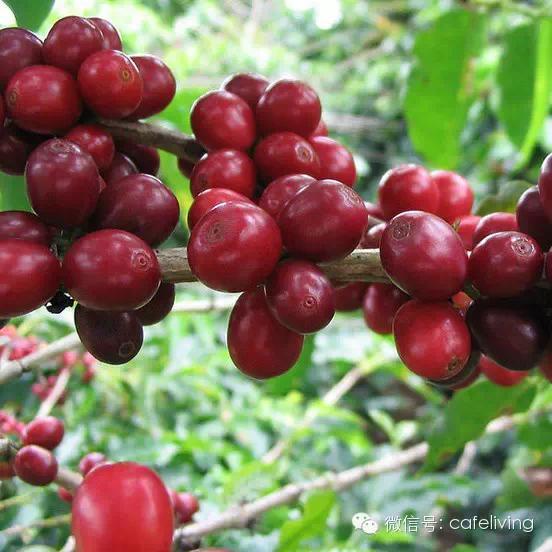
Kenya
"SL28" and "SL24" is a bourbon line screened and cultivated by French and British missionaries and researchers in Kenya at the beginning of the 20th century. For a hundred years, it has adapted to the high concentration of phosphate soil in Kenya, and the Kenyan bean has a special sour aura, which is different from the bourbon bean in Central and South America. However, after it was transplanted to Asia, it lost its flavor and could not show their characteristics.

Yellow bourbon
"Bourbon Amarello" yellow bourbon is a unique yellow-skinned bourbon variety in the Brazilian state of Sao Paulo. Coffee fruits usually turn red when ripe, but yellow bourbon does not turn red when ripe, so it is named after orange. Huang Boban became Deep-Fried Chicken of the boutique coffee industry because he almost won the top three prizes in "CoE" (Chinese name: extraordinary Cup).
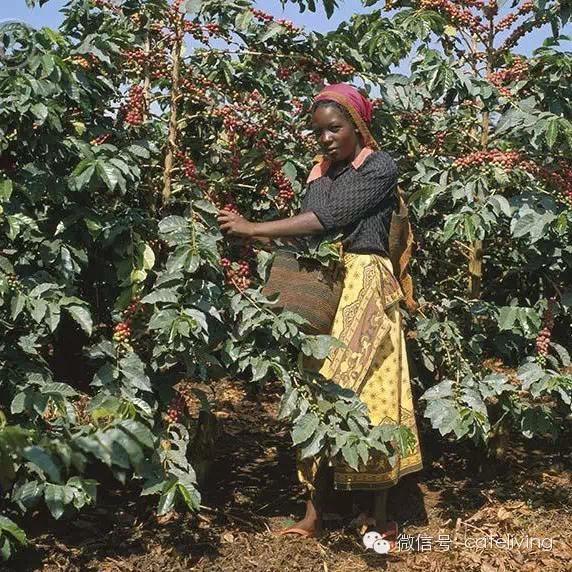
Kaddura
"Caturra" is a single gene variant of bourbon discovered in Brazil in the 1950s. It has better yield and disease resistance than bourbon, and the tree is shorter and easy to harvest. Unfortunately, it has the same problem as bourbon-- as a result, it has a year off, and the flavor is equal to or slightly worse than bourbon beans.
But it is more adaptable, can be planted with high density, does not need shade trees, and can be vibrant in direct exposure to the sun, so it is also called "exposed coffee" (Sun Coffee).
Kaddura is suitable for high altitude areas from 700m to 1700 m, but the higher the altitude is, the better the flavor is, and the bean yield is relatively reduced. There are also variants of yellow Kaddura in Central and South America, but the wind rating is not as good as Huang bourbon.
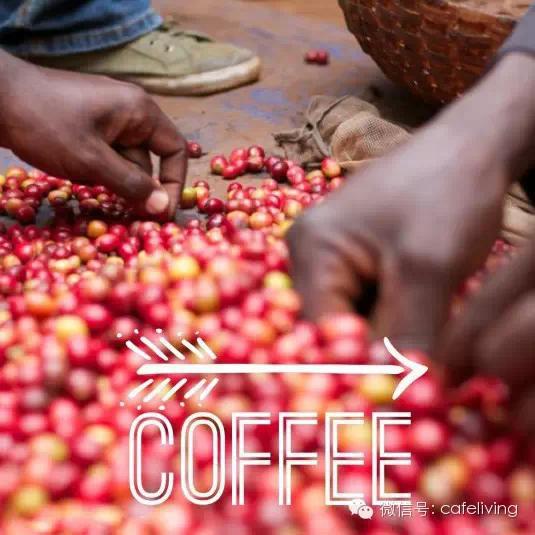
Pacas
"Pacas" in 1935, El Salvador coffee farmer "Don Alberto Pacas" selected high-production San Ramon bourbon varieties and moved them to the farm for planting. In 1956, his coffee tree produced more fruit than the same kind of coffee trees. University of Florida professor "Dr. William Cogwill" identified this as a genetic mutation in bourbon and named it "Pacas".
Pacas, with its high output and good quality, is popular in Central America. Currently, 68% of El Salvador is bourbon, while Pacas has 29%.
The variants of the iron pickup family.

Elephant bean
"Maragogype" was discovered in 1870 in the "Maragogype" producing area of "Bahia" in northeastern Brazil. It got its name because the bean body is at least three times larger than the average Arabica, making it the largest in the world. It is the most well-known variety of iron pickup beans, is the giant baby of the iron pickup family.
Elephant beans are very suitable for the low altitude area of 700-800 meters, but the flavor is dull, tasteless, and even has a fishy smell. Therefore, it is appropriate to choose the area above 1000 meters above sea level, with better flavor, mild sour taste and sweet fragrance.

Can accept
Although "Kona" is planted at an altitude of several hundred meters, it comes from Kona, a big island of Hawaii, with a mild sea breeze and fertile volcanic soil, with an incomparably clean acidity and sweetness. Compared with the blue mountains with higher elevations, it is even worse.
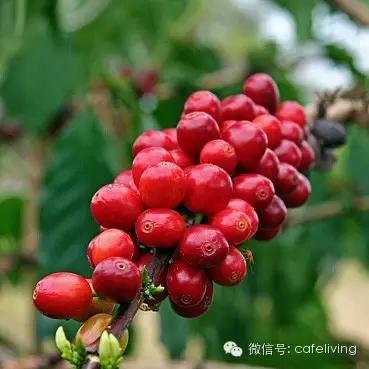
Blue Mountain
"BlueMountain" is popular all over the world, and Blue Mountain, which is hard to get a bean, comes from the iron pickup family. Why is Blue Mountain so hot and expensive?! It is mostly because it is contracted by the royal army, and partly because it is not satisfied with soil and water and is in poor condition once it leaves Jamaica. After two hundred years of domestication, Blue Mountain has evolved successfully in Jamaica, and its resistance to fruit rot is better than that of ordinary iron pickups. Where can the Blue Mountains be tamed next? We can look forward to it.
A hybrid of two families.
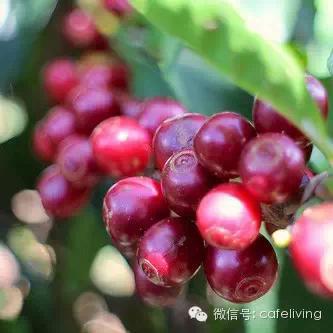
New World
"Mundo novo" bourbon had an affair with the iron pickup! There are illegitimate children in two families! It was first found in Brazil with high yield and strong disease resistance. The only drawback is that it can be more than 3 meters high and is not easy to harvest. Because of the good quality of cup test, it is regarded as the new hope of Brazilian coffee industry, so it is named New World.
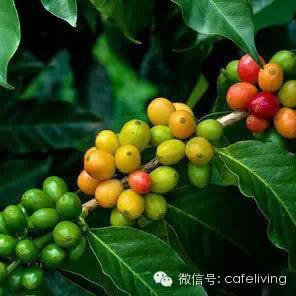
Kaduai
"Catuai" Kaduai is a hybrid of New World and Kaddura. It inherits the advantage of Kaddura's low stature and makes up for the weakness of Arabica fruit. The result is solid, and it is not easy to fall when the strong wind blows. The biggest regret is that its overall flavor is slightly more monotonous than Kadura.
Kaduai also has the difference between red fruit and yellow fruit, and red fruit wins more often than yellow fruit. Kaduai, Kaddura, New World and bourbon are the four main varieties of coffee in Brazil.
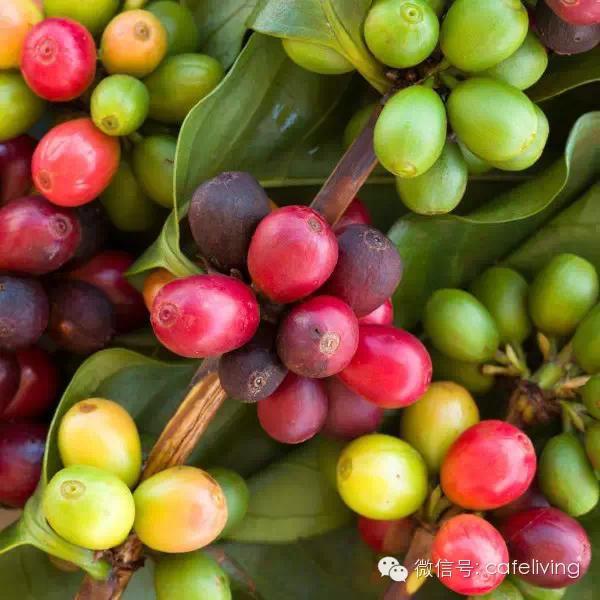
Pacamara
The "Pacamara" Pacamara is the crystallization of the elephant bean of the iron pickup and the Pacas of the bourbon. It is also a hybrid, and the size of the bean is second only to the elephant bean. In 2007, he won the "CoE" championship of Guatemala and Honduras, and even arranged the top three awards of El Salvador, which is a rising star of El Salvador.
Bastards with turnips
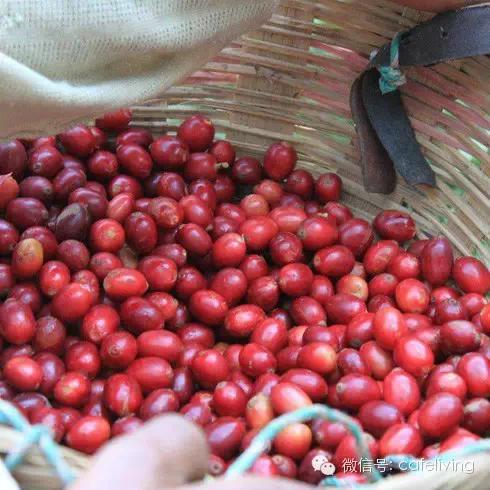
Timo
"Timor" found the baby of Arabica and radish beans in East Timor, an island country at the eastern end of the Nusa Tenggara Islands. Timo, closer to Arabica. Timo has a low sour taste and lacks characteristics, so it is commonly used in Taiwan to make low-cost formula beans. Well, in terms of the importance of genes.
However, East Timor also has high-altitude pure Tibica treated with water. Before buying, it is important to find out whether it is a hybrid or a purebred iron card water washed beans, the quality of the two is very different, the former is mediocre, and the latter is amazing.

Katimo
In 1959, the Portugal moved the Bourbon variety Kadura to East Timor and mixed it with Timo with radish bean lineage to breed a hybrid second generation Katimo with strong disease resistance and production ability.
Although Katimo inherited the advantages of turnip beans, he also inherited the genes for poor flavor. In recent years botanists around the world have turned to cross-breeding Arabica and Katimodo bands in an attempt to reduce the radish bean lineage in order to improve the bad reputation of the poor Katimodo Cup test.
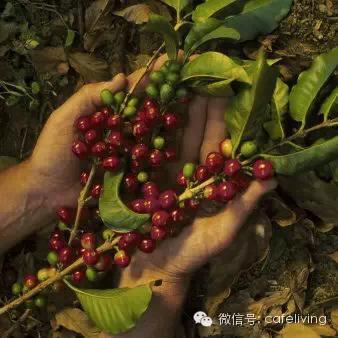
Ikatu
"Icatu" in the past, Alabaster "Arabusta" mixed with Arabica and radish beans increased yield and disease resistance, but the flavor of coffee was not good all the time. Scientists crossed Arabica varieties with Arabica varieties such as Kaddura, New World and Bourbon for many generations, which gradually reduced the bad smell of radish beans and improved the aroma of Arabica beans, thus giving birth to an excellent variety of multi-generation hybrids-Icato.
In addition, the hybrids of Arabica and radish beans, such as "Ruiru 11", "Chandragiri" and so on, generally inherit the stout disease resistance of radish beans, but weaken the flavor of Arabica. For coffee lovers, whether these hybrids can perform satisfactorily or not remains to be further cultivated and tested.

The purpose of this paper is to give coffee newcomers a concise understanding of Arabica variety classification, which can not be used as a reference for rigorous botanical classification.
Important Notice :
前街咖啡 FrontStreet Coffee has moved to new addredd:
FrontStreet Coffee Address: 315,Donghua East Road,GuangZhou
Tel:020 38364473
- Prev

Tips for distinguishing the freshness of coffee beans Grinding of coffee beans
[tips for judging the freshness of coffee beans] smell: fresh coffee beans smell strong, otherwise tasteless or bad smell. Look: good coffee beans are complete in shape and full in size. On the contrary, the shape is incomplete. Pressure: fresh coffee beans are pressed fresh and crisp, and the fragrance wafts out when they crack. Color: dark black coffee beans, brewed coffee has a bitter taste. Coffee beans with a yellow color
- Next

Professional coffee roasting knowledge mixing skills of coffee beans
People need to put coffee from different places together for several different purposes. The ideal goal, of course, is to piece together a coffee that tastes better than any of them. But generally speaking, Arabica coffee from a single origin is enough to make coffee that tastes good for export; it has a delicate flavor, a soft taste and a sweet aftertaste. So there is no need to match (that is, different places of origin
Related
- Guji coffee producing area of Guji, Ethiopia: Humbela, Shakiso, Wulaga
- What is the most expensive variety of Qiloso in BOP multi-variety group?
- How to store the coffee beans bought home?
- Why are Yemeni coffee beans so rare now?
- Ethiopian Sidamo all Red Fruit Sun Sun Santa Vini Coffee beans
- SOE is mostly sour? What does it mean? Is it a single bean? what's the difference between it and Italian blending?
- Is Italian coffee beans suitable for making hand-brewed coffee?
- How to choose coffee beans when making cold coffee? What kind of coffee beans are suitable for making cold coffee?
- Just entered the pit to make coffee, what kind of coffee beans should be chosen?
- Can only Japan buy real Blue Mountain Coffee? What are authentic Jamaican Blue Mountain coffee beans?

